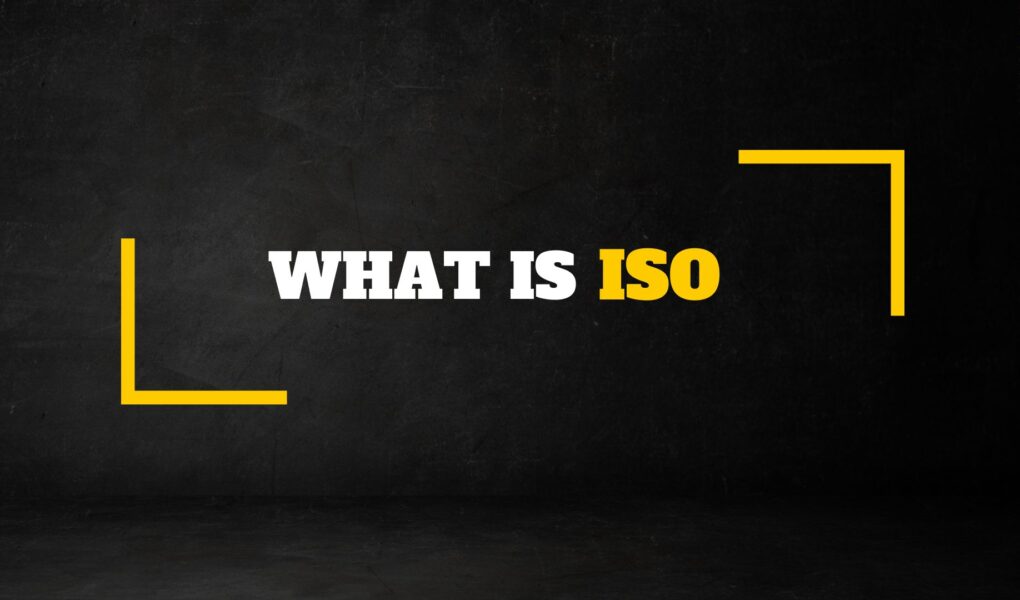Choosing the right ISO setting is highly significant in acquiring desired results. Understanding and using ISO effectively is an important aspect of photography that can greatly impact the quality of the final image.
In photography, the term ISO pertains to the camera’s sensor or film’s sensitivity to light. To put it differently, it decides the amount of light necessary to produce a correctly exposed photograph. ISO is among the three primary controls in photography, along with shutter speed and aperture, that influence the exposure of a picture. In this article, we’ll explore what ISO is, how it works, and how to use it effectively.
What is ISO?
ISO, which stands for International Organization for Standardization, was originally used to measure the sensitivity of film to light. Nowadays, in the digital era, ISO pertains to the camera’s sensor’s light sensitivity. ISO is a measure that uses numerical values to determine the sensitivity of a camera’s sensor or film to light, where a larger number signifies a greater sensitivity. For example, ISO 400 is more sensitive to light than ISO 100.
How does ISO work?
By adjusting the ISO setting, the quantity of light required to create a well-exposed photograph can be controlled. Using a higher ISO number enables you to capture images in low-light situations without the need for a slower shutter speed or a wider aperture. This is because a higher ISO setting makes the camera’s sensor more sensitive to light, so it requires less light to create a properly exposed image.
Nevertheless, there is a compromise as a higher ISO configuration can also amplify the level of digital noise or graininess in the photo. Digital noise can make the image look less sharp or clear and can also affect colour accuracy. Therefore, it’s important to choose the right ISO setting for your situation to achieve the desired exposure and image quality.
ISO Numbers
ISO numbers typically range from 100 to 6400 or higher, depending on the camera. The lowest ISO number (such as ISO 100) is less sensitive to light, while the highest ISO number (such as ISO 6400) is more sensitive to light.
- ISO 100-200: These are typically used in bright daylight or studio lighting where there is plenty of light available. Lower ISO settings generally result in sharper, less noisy images.
- ISO 400-800: These are typically used in lower-light situations, such as indoor photography or outdoor scenes in dim light. These settings may produce a bit of noise, but the trade-off is the ability to use a faster shutter speed and/or narrower aperture for better depth of field.
- ISO 1600-3200: These are typically used in low-light situations where there is very little available light, such as night photography or indoor sports events. These settings can result in a noticeable amount of noise in the image but are necessary to achieve proper exposure.
- ISO 6400 and higher: These settings are typically used in extremely low light situations or where high shutter speeds are required, such as for action photography. The trade-off is that images taken with these settings will have a significant amount of digital noise.
Choosing the Right ISO
When choosing the right ISO setting for your photo, you need to consider the available light and the desired effect. Suppose you are capturing photographs in bright sunlight, in that case, you would prefer using a lower ISO setting to retain image quality. In contrast, if you’re photographing in dim light conditions, you may require a higher ISO setting to achieve the correct exposure.
The ideal ISO setting relies on the lighting conditions, camera capabilities, and the desired photographic effect. It’s recommended to try out various ISO configurations to observe their influence on your pictures. Keep in mind that a higher ISO setting can also affect the shutter speed and aperture settings, so you’ll need to adjust those accordingly.
ISO and Exposure Triangle
In photography, ISO is one of the three fundamental elements of the exposure triangle, in addition to shutter speed and aperture. The exposure triangle represents the relationship between these three settings and how they affect the exposure of the image.
The aperture setting governs the magnitude of the opening in the lens, which establishes the amount of light that penetrates the camera. Shutter speed controls the duration for which the camera’s shutter remains open, thus determining the quantity of light entering the camera. In contrast, the ISO setting controls the level of light sensitivity of the camera’s sensor.
For example, you are photographing in low-light settings; you may need to increase the ISO to attain a correctly exposed image. Nevertheless, a higher ISO value can cause more digital noise, which might adversely affect the picture’s quality. To compensate, you can adjust the aperture or shutter speed settings to balance the exposure.
Modern Digital Cameras and ISO
Modern digital cameras have a wide range of ISO options, usually ranging from 100 to 6400 or higher. Some cameras even have an extended ISO range that goes beyond 6400. This allows photographers to adjust the ISO according to their specific needs.
Most cameras also have an automatic ISO setting that adjusts the ISO based on the available light and other camera settings. This can be useful in situations where lighting conditions are constantly changing, such as when shooting at an outdoor event.
Dealing with Digital Noise
As previously mentioned, raising the ISO setting can lead to the appearance of digital noise or graininess in the image. However, there are ways to reduce digital noise in post-processing. Software such as Adobe Lightroom or Photoshop can be used to apply noise reduction to images, but it’s important to strike a balance between reducing digital noise and preserving image detail.
Conclusion
ISO is a crucial component in photography that can impact the exposure and image quality of your photographs. It’s important to experiment with different ISO settings and other camera settings to find the right balance for your specific situation. By becoming proficient in ISO, aperture, and shutter speed, you can elevate your photography to the next level.



